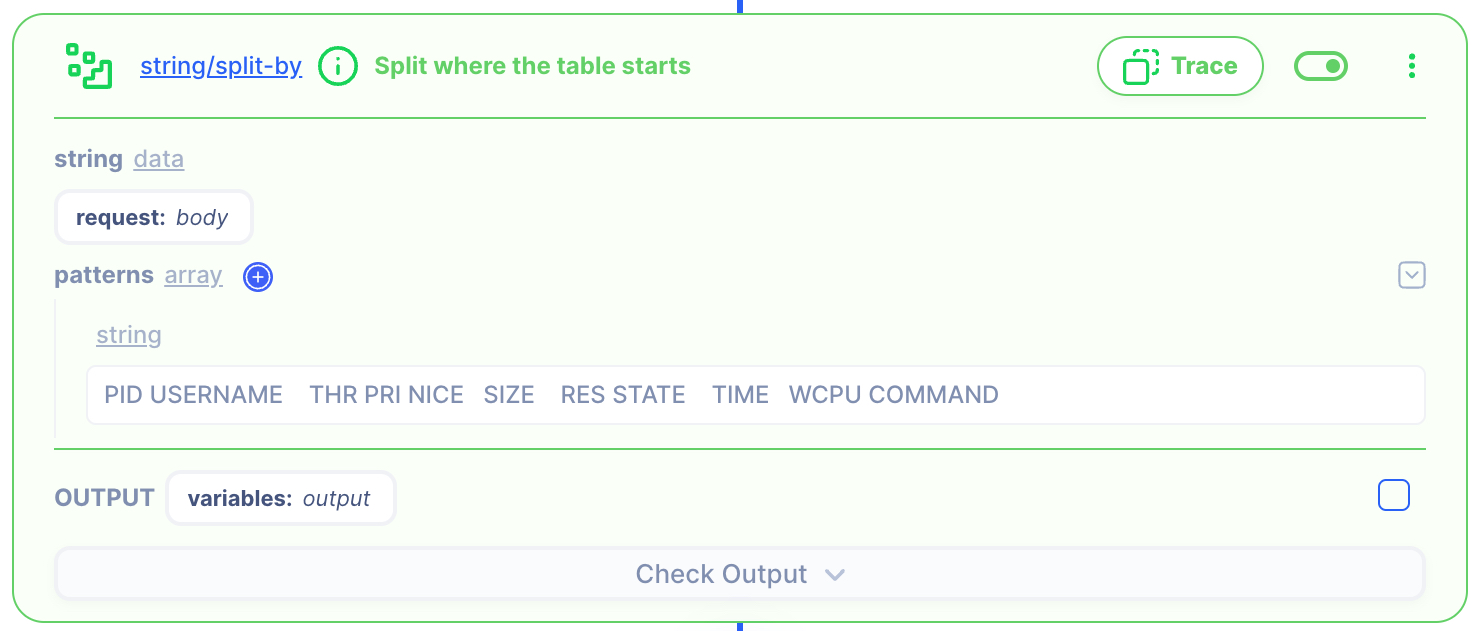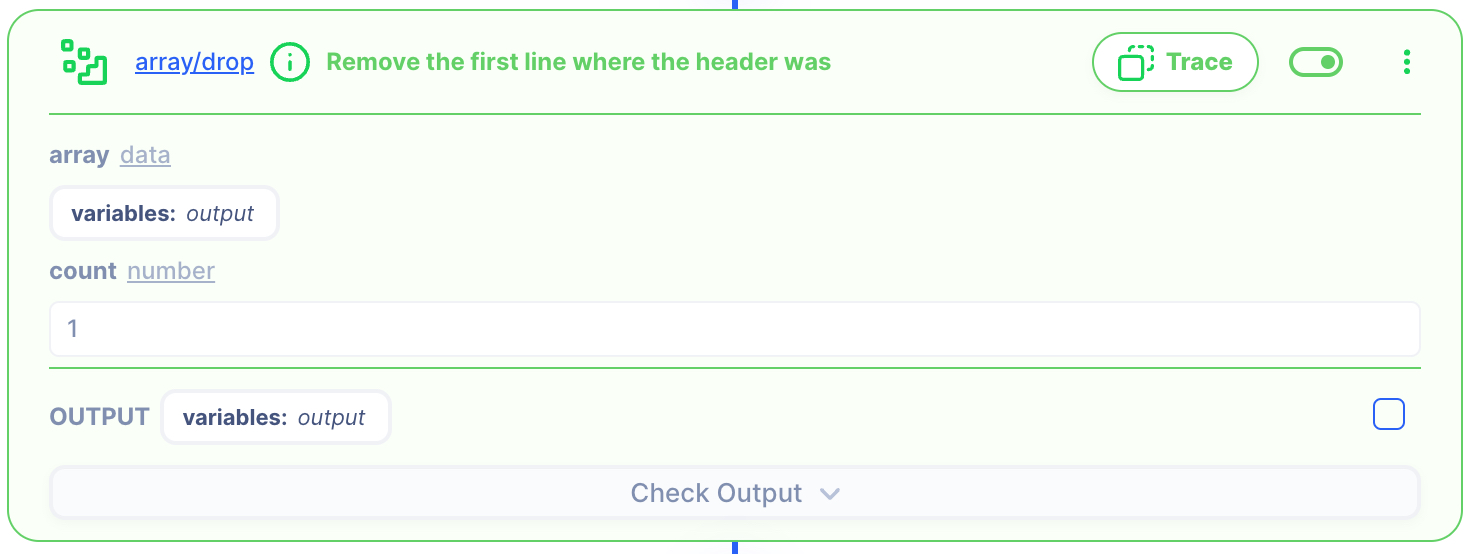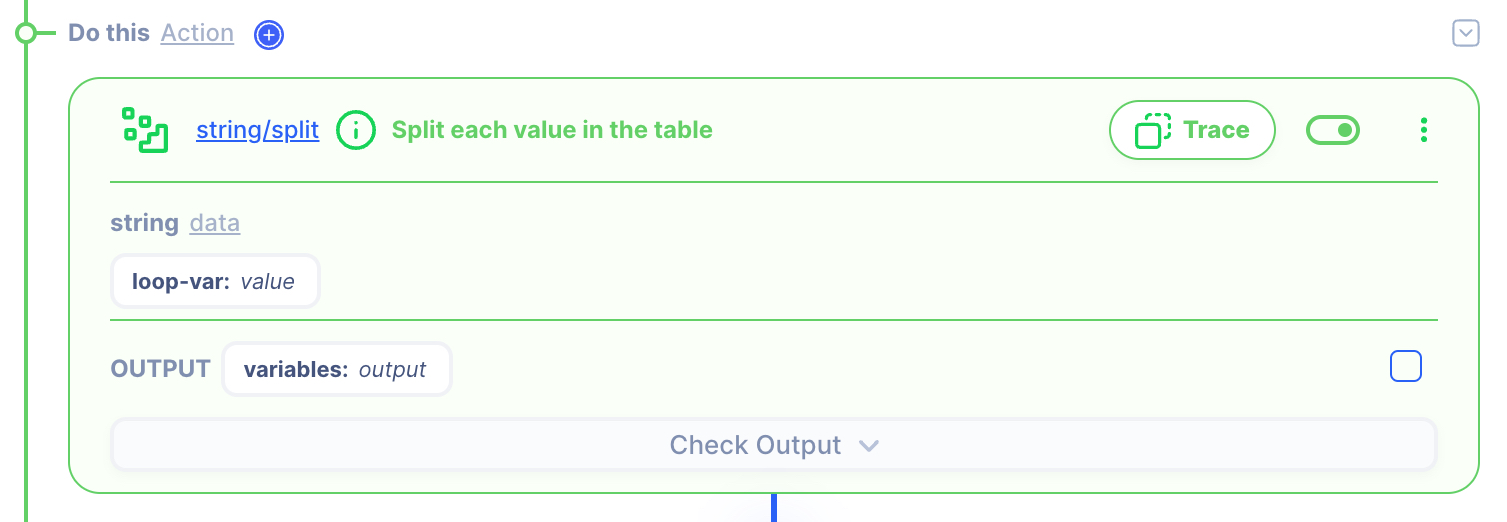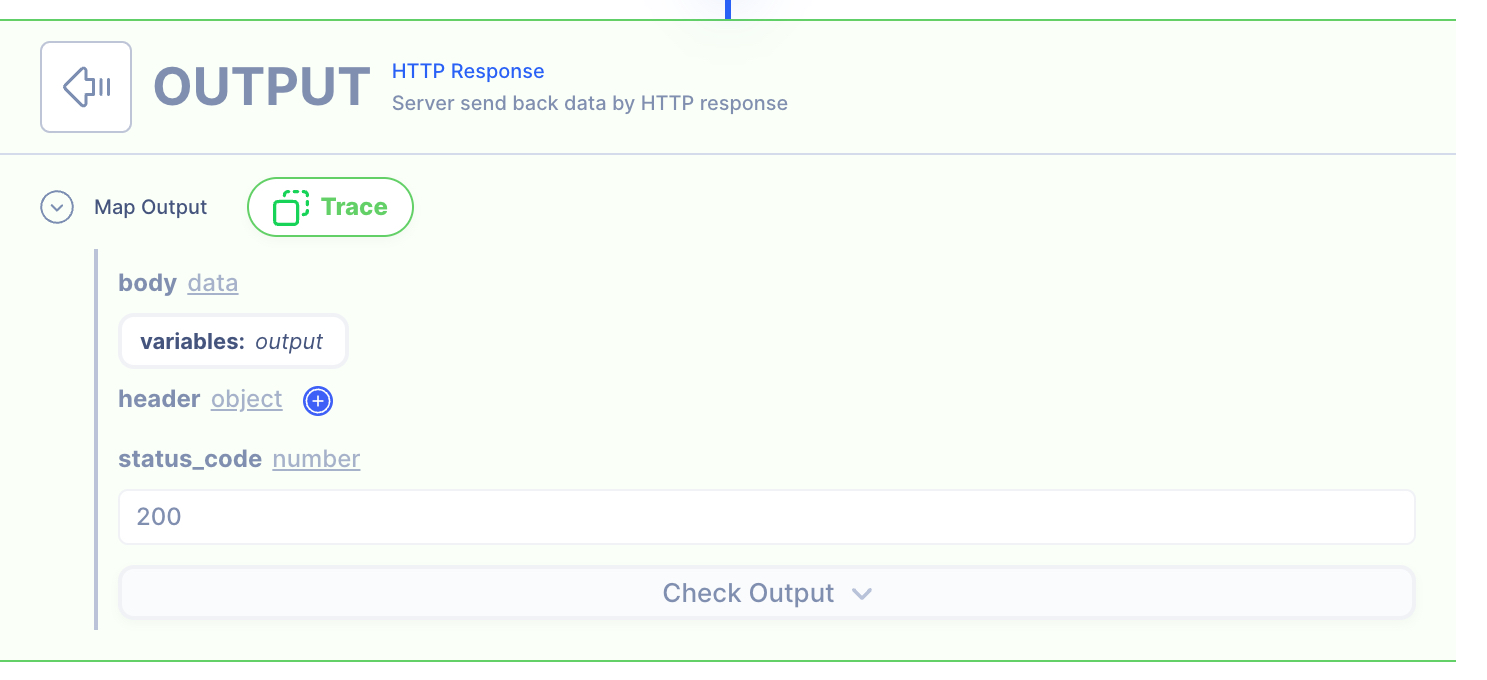1 to N Juniper Log Parser
Overview
Receive log from Juniper and split the records into an array of entries.
In this example, real log from the Juniper which is in a string format is normalized into a standardized JSON format.
A Service (equvalent to a function in programming) will be used for this example.
Supporting Concepts
Basic concepts needed for the use case
| Topic | Description |
|---|---|
| API | An API in API AutoFlow is simply an OpenAPI model |
| Server | A server accepts and handles the request and response. |
| Simulation | Data simulation is a mock data simulated for the purpose of visualizing the data in every step of the workflow.
|
| Scope | A scope is a namespace for variables. |
| Data Types | Data types describe the different types or kinds of data that you are gonna store and work with. |
Use case specific concepts
| Topic | Description |
|---|---|
| Action string/split-by | This Action returns array that divides a string into parts based on a pattern. |
| Action string/split-by-newline | This Action returns array that splits a given string based on a newline. |
| Action array/drop | This Action returns array that divides a string into parts based on a pattern. |
| Action iteration/map | Iterate over array of data mapping result to each array position. |
| Action string/split | This Action returns array that divides a string into parts based on a pattern. |
Detail
The service has a single input:
- syslog: a string that has multiple lines of record.
last pid: 8197; load averages: 0.65, 0.46, 0.42 up 21+12:45:04 22:32:33
107 processes: 4 running, 88 sleeping, 15 waiting
Mem: 163M Active, 90M Inact, 64M Wired, 72M Cache, 61M Buf, 92M Free
Swap:
PID USERNAME THR PRI NICE SIZE RES STATE TIME WCPU COMMAND
11 root 1 171 52 0K 3024K RUN 367.5H 68.75% idle
8193 qatest 1 123 0 20300K 13364K RUN 0:01 34.34% cli
8191 root 1 107 0 6648K 3040K select 0:00 12.81% sshd
1208 root 1 8 0 135M 13640K nanslp 50.8H 1.03% pfem
1205 root 1 4 0 80828K 9992K kqread 911:00 0.83% chassism
1243 root 1 97 0 9120K 5676K select 100:30 0.05% license-check
The goal of the operation is to extract the IP address and port number from each record (each line).
The return should be an array of objects like:
[
{
"WCPU": "68.75%",
"COMMAND": "idle"
},
{
"WCPU": "34.34%",
"COMMAND": "cli"
}
...
]
Content
INPUT: HTTP Request
1: Create an API endpoint
Learn how to create an API.
Create an API
From the left navigation, go to the API section and create a new API.
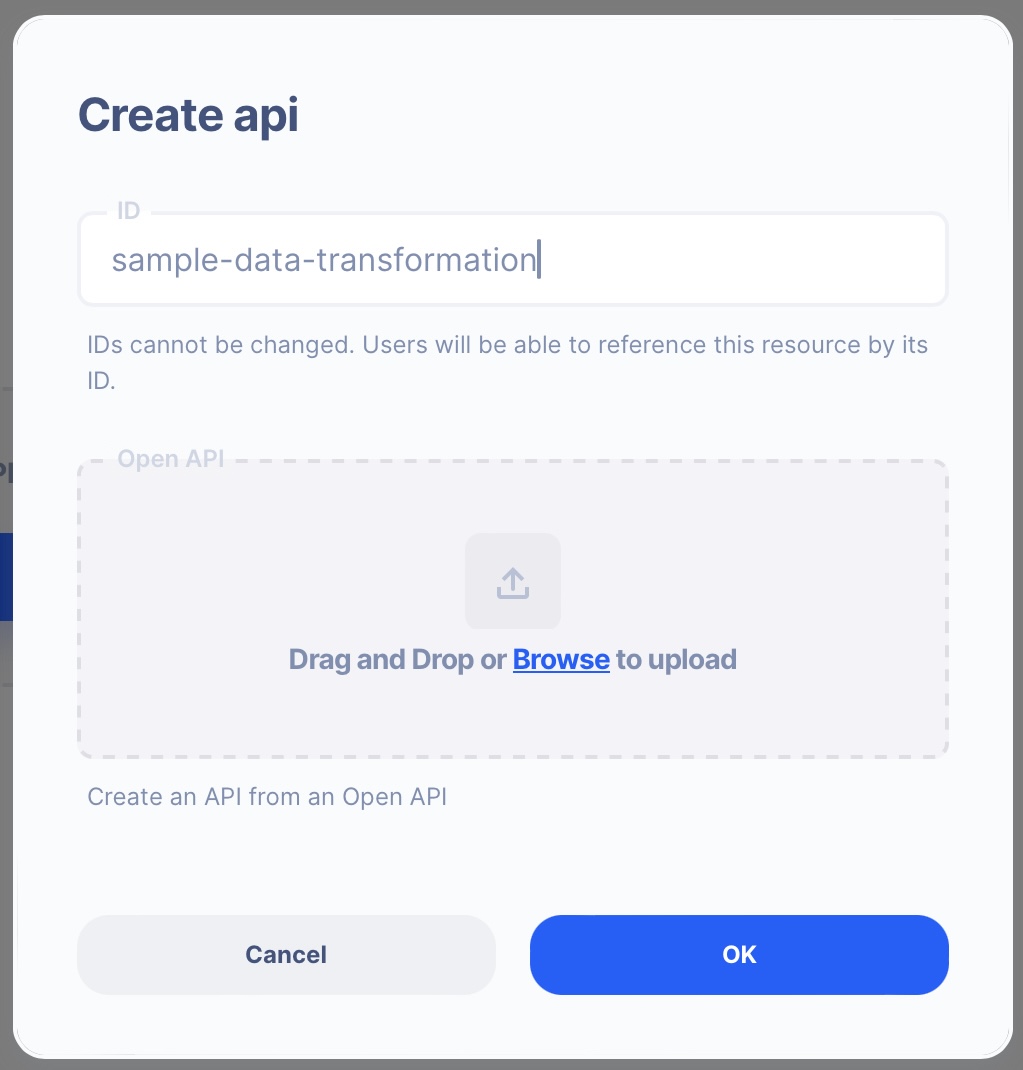
- ID:
sample-data-transformation
Create an API Path
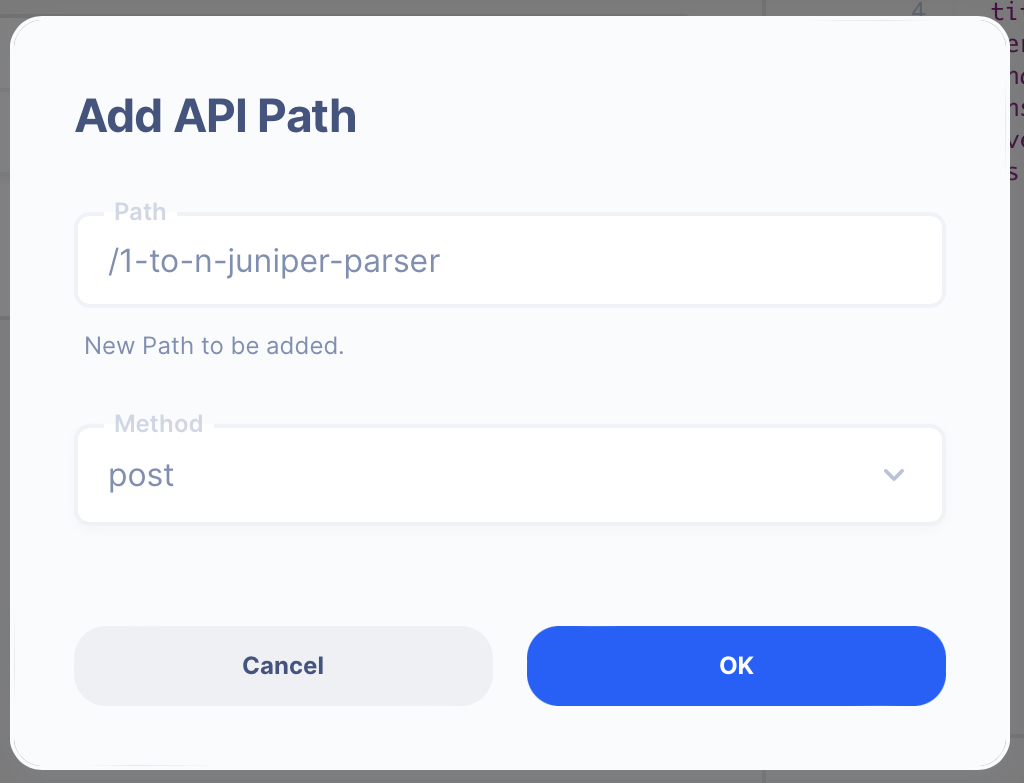
- Path:
/1-to-n-juniper-parser - Method: POST
2. Create a Server Operation
Learn how to create a Server.
Create a Server
From the left navigation, go to the Server section and create a new Server.
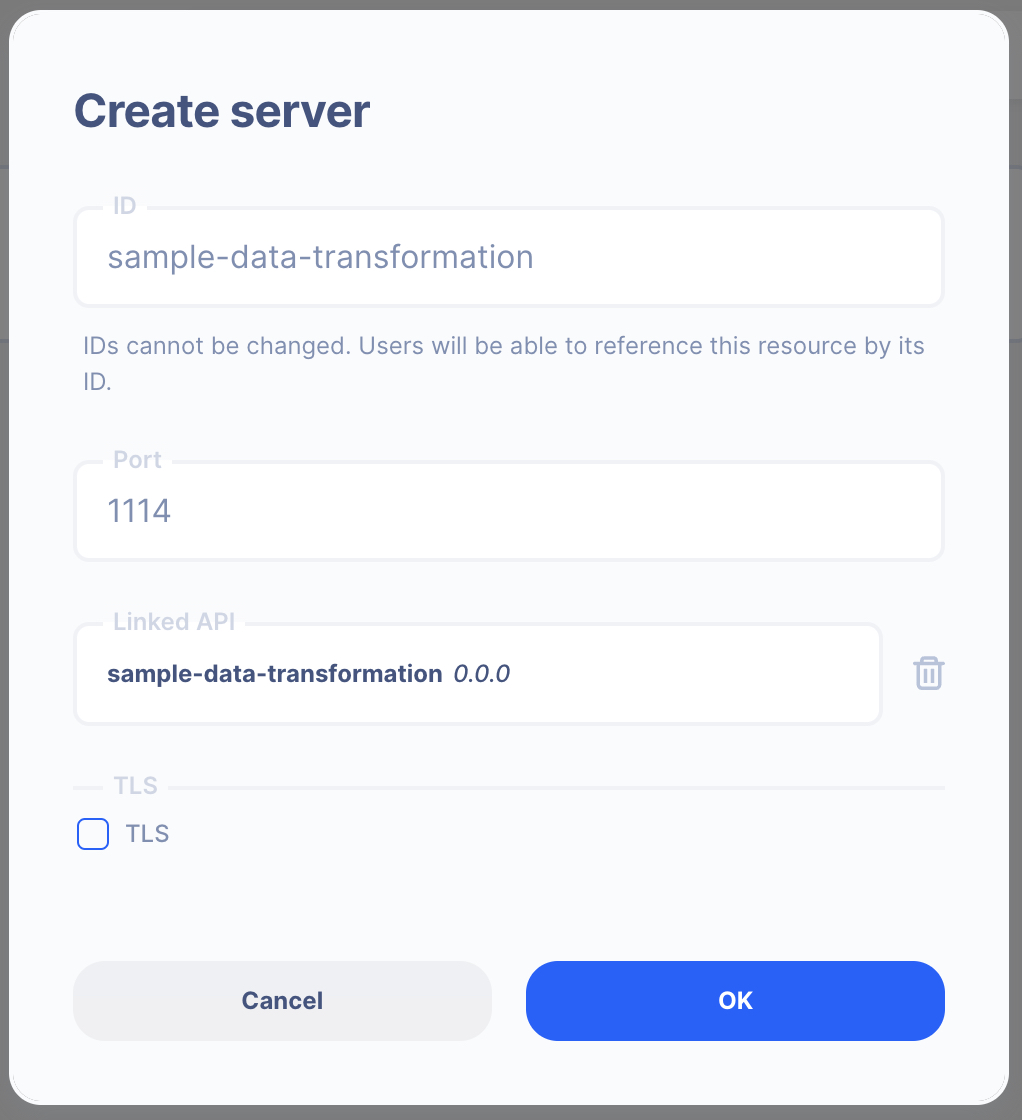
- Server ID:
sample-data-transformation - Port Number:
1114Feel free to select your own port number - Linked API:
sample-data-transformation(select the API you created above)
Create a Server Operation

- Press the "Add API Operation"
- Select the API endpoint created above
3 : Create Data Simulation using Real Data
Learn how to create a Simulation.
We will use the "real data" to create the test simulation.
1. Send a HTTP request from Postman or cURL
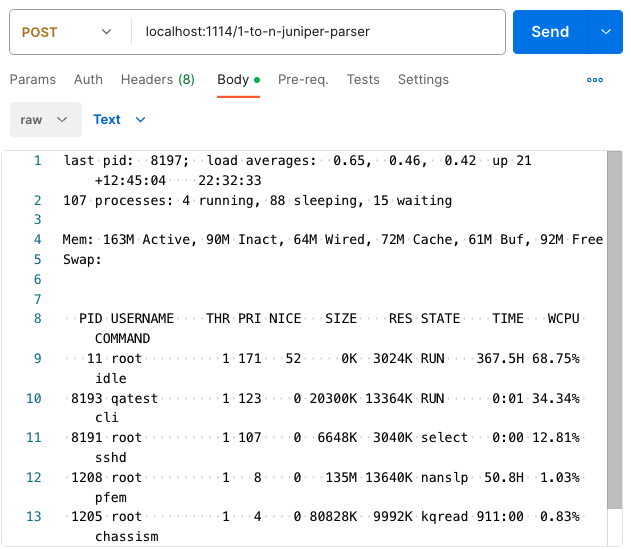
API Autoflow Postman Collections
cURL
curl --location 'localhost:1114/1-to-n-juniper-parser' \
--header 'Content-Type: text/plain' \
--data 'last pid: 8197; load averages: 0.65, 0.46, 0.42 up 21+12:45:04 22:32:33
107 processes: 4 running, 88 sleeping, 15 waiting
Mem: 163M Active, 90M Inact, 64M Wired, 72M Cache, 61M Buf, 92M Free
Swap:
PID USERNAME THR PRI NICE SIZE RES STATE TIME WCPU COMMAND
11 root 1 171 52 0K 3024K RUN 367.5H 68.75% idle
8193 qatest 1 123 0 20300K 13364K RUN 0:01 34.34% cli
8191 root 1 107 0 6648K 3040K select 0:00 12.81% sshd
1208 root 1 8 0 135M 13640K nanslp 50.8H 1.03% pfem
1205 root 1 4 0 80828K 9992K kqread 911:00 0.83% chassism
1243 root 1 97 0 9120K 5676K select 100:30 0.05% license-check'
2. Check the data is received by the server endpoint
API Autoflow captures the data received and it can be used to create data simulation.
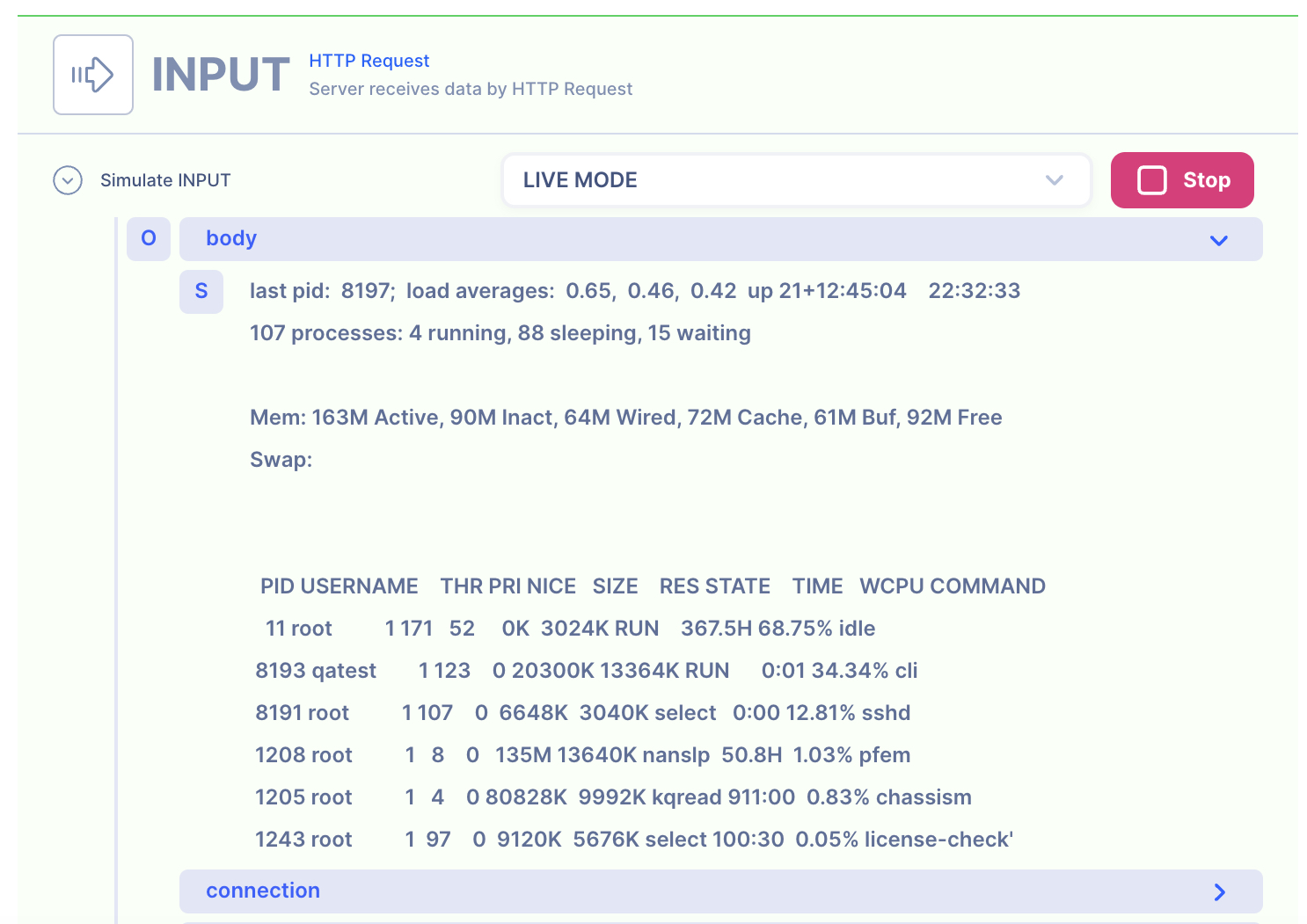
Action(s)
Learn how to create a Actions.
Add actions to transform the data.
You can think of yourself as a cook. The big chunk of string you received is like a block of meat that you need to cut down into pieces for your recipe.
1. Split the document with the column header
The first big cut you are going to make is isolating the table.
We can use String/split-by action to split with the table header PID USERNAME THR PRI NICE SIZE RES STATE TIME WCPU COMMAND.
String Split By
2. Split the table in each line
Now that we have the table isolated, we can cut each line into a separate entry.
Note that original string was split into two pieces and we are working with the second piece stored in variable: output > 1.
3. Remove the unwanted first line
During the split, the first line is created with an empty value. We can easily remove that by using Array drop action.
In the action setting, we are dropping 1 entry from the array that was created (output) from the previous action.
4. Remove the unwanted first line
- We will be iterating over the list of records that's saved in the scope
variable: output.
The previous action "string/split-by-newline" stored the output in the scope "variable: output". - This is a special scope that exists only in the iteration. It is used to store the values as it iterates over the array.
In our example, we will call itip-port.
Iteration Map
Learn how to use iteration/map actions.
SETTINGS

ITERATE: data
[variable:
output]SCOPE: string
loop-var
String/Split: Split each value
OUTPUT: HTTP Response
1. Create a NEW object and map the IP and Subnet
Both the action's output and HTTP response body are set to variables: output. There's no change that needs to be made.
HTTP Response
- Data referenced in HTTP response is what gets sent back to the client.
- Map the output from the actions to be sent back.
NOTE: By default, the action output is set to variable output. If you intend to keep each action's output without it being overwritten by the next action, simply rename the output location in the action's output.
2. Test the API with Postman or CURL
cURLcurl --location 'localhost:1114/1-to-n-juniper-parser' \
--header 'Content-Type: text/plain' \
--data 'last pid: 8197; load averages: 0.65, 0.46, 0.42 up 21+12:45:04 22:32:33
107 processes: 4 running, 88 sleeping, 15 waiting
Mem: 163M Active, 90M Inact, 64M Wired, 72M Cache, 61M Buf, 92M Free
Swap:
PID USERNAME THR PRI NICE SIZE RES STATE TIME WCPU COMMAND
11 root 1 171 52 0K 3024K RUN 367.5H 68.75% idle
8193 qatest 1 123 0 20300K 13364K RUN 0:01 34.34% cli
8191 root 1 107 0 6648K 3040K select 0:00 12.81% sshd
1208 root 1 8 0 135M 13640K nanslp 50.8H 1.03% pfem
1205 root 1 4 0 80828K 9992K kqread 911:00 0.83% chassism
1243 root 1 97 0 9120K 5676K select 100:30 0.05% license-check'
